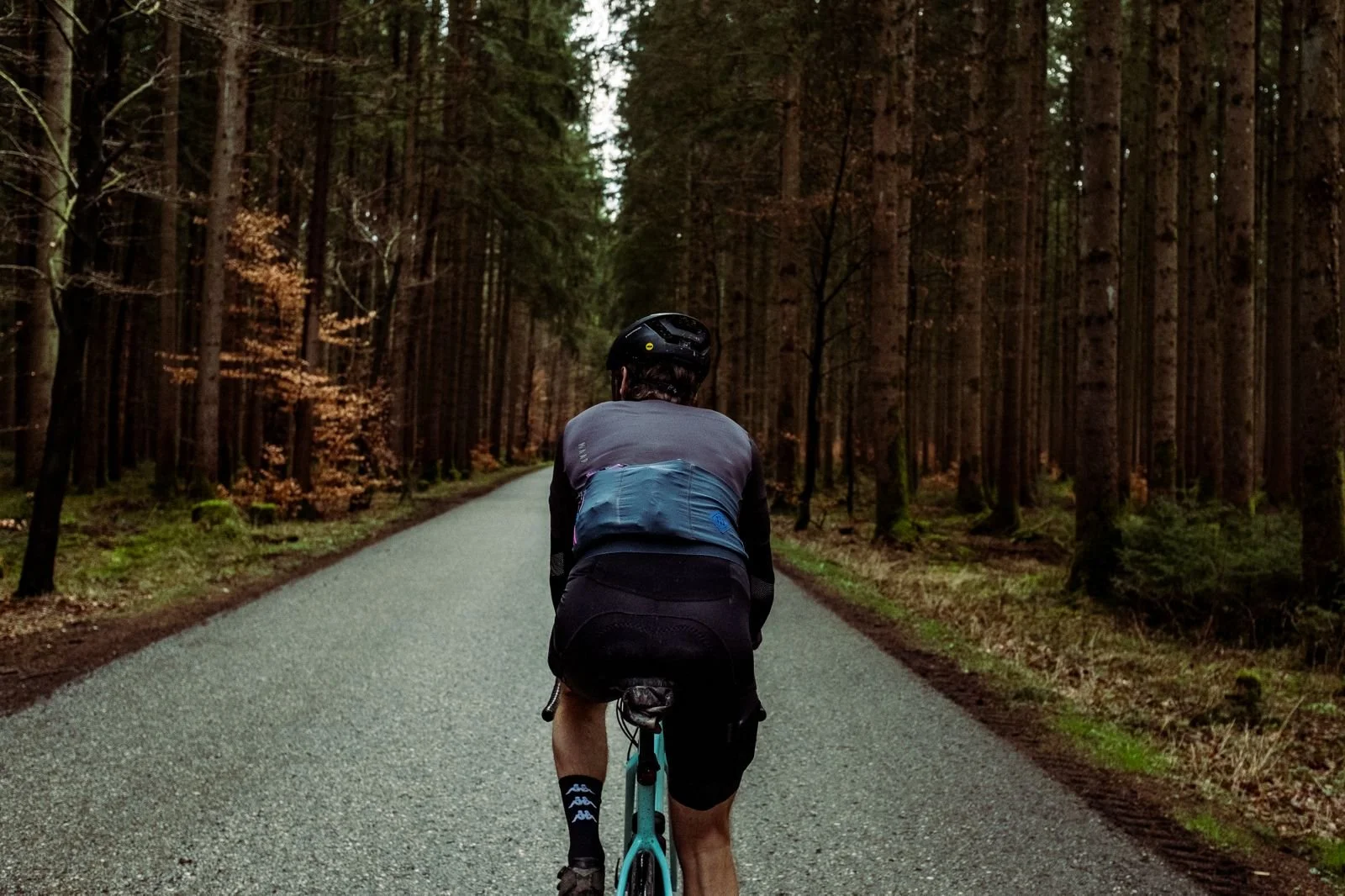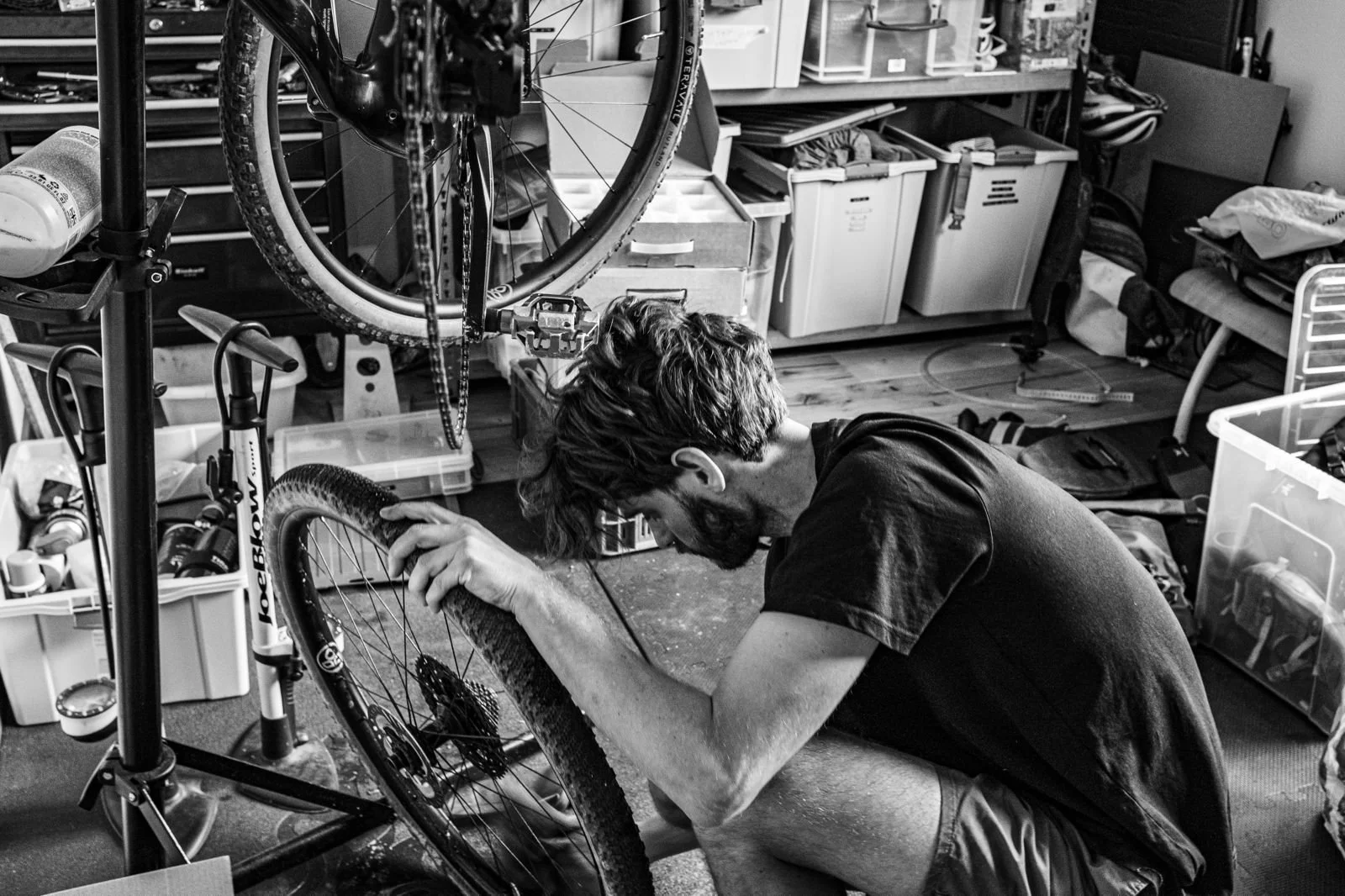Bikefitting process
Every rider has their own story — that’s what I love most about bike fitting. My goal isn’t to push you into formulas, but to find the position that feels right for you and how you ride. My role is to listen, observe how your body moves on and off the bike and then translate it into a position that feels natural, comfortable, and efficient.
During a two to three hour session, we look at key aspects such as posture, pedalling style,
stability, and how your body supports itself on the bike. Small changes in saddle height, bar position, or cleat setup can make a big difference—improving comfort, preventing injuries, and helping you ride more freely. Everything is done directly on your own bike, so you immediately
feel the real effect of each adjustment.
The fit is a collaborative process: I can see how you move, but only you can tell me how it feels. That’s why your feedback is central at every step.
And because the best position often shows itself after you’ve ridden in the real world, a follow-up session is included. This allows us to fine-tune once you’ve tested the fit outside, so the end result isn’t just theory—it’s a position that truly works for you.
1
Getting to know you
We start with a conversation about your riding background, injury history, current discomforts, and goals — just to get to know each other.
This first step helps me understand what kind of rider you are, where you’re coming from, and what you’d like to achieve.
2
Off-the-Bike Assessment
Before we make any changes, I take a look at how your body moves.
We look at posture, range of motion, foot structure, and any physical patterns or asymmetries.
It’s a simple step, but it gives us a clear foundation for the fit — helping us understand what your body naturally prefers before we start adjusting anything.
3
Shoe setup
Your feet are where every ride begins.
I take time to check your shoes and cleat setup, and fine-tune them with options like insoles or small wedges if needed.
Even the smallest tweaks here can bring more comfort, smoother pedaling, and a steadier feeling on the bike — it’s often where big improvements start.
4
On-the-Bike Adjustments
Everything happens on your own bike
You’ll feel each change straight away — that’s how we make sure every adjustment feels right in real riding conditions. Together, we fine-tune your position — from saddle height and setback to reach and handlebar setup — until it all comes together naturally
5
Final bike setup
Once your position is dialed in, I’ll make the changes directly on your bike — whether that’s adjusting or installing a new stem, handlebar, or other components.
Standard adjustments are included in every fit. And if your setup needs a bit more workshop time (for example with fully integrated cockpits or small repairs), we’ll plan that together to make sure everything is done properly and ready to ride.
6
A Process, Not Just a Session
A fit isn’t something you always get perfect in three hours — that’s why a follow-up is included if needed. Once you’ve had time to ride and reflect, we can fine-tune anything that still feels off.
I also offer special rates for returning riders who like to check in once a year — because your position (and your riding) should evolve over time.
Good to know
I aim to give every rider a bike fit that’s as complete as possible within the three hours we have together. In reality, some people need more time than others. If it’s your first fit and you’re new to cycling, we’ll start with the basics before diving into details. If you come with very specific focus areas, those may take longer to resolve. And some bodies are simply harder to fit than others. My goal is always to cover as much as possible, but three hours can sometimes mean we prioritise the most important issues and save others for a follow-up.
Here are some aspects I want to be clear about before you book, so your expectations match the process:
-
I keep a collection of saddles that have worked well for other riders in the past. As an independent fitter, it’s impossible to stock every model — there are simply too many.
If it’s clear that your current saddle is not suitable (wrong width, wrong shape, or causing obvious discomfort), we can test some of the options I have. If the discomfort could also come from your position, we’ll first adjust that. At your follow-up we can then see how things feel and decide if a saddle change is still needed.
-
I don’t yet offer full shoe fitting services, so we’ll work with the shoes you bring. I’ll analyse them, explain whether they’re suitable, and give advice on what to look for if you need a new pair. During the fit, I can still improve things significantly through insoles, wedging, or shims. Cleat setup is of course also part of the fit, as it’s a key connection between you and the bike. We’ll fine-tune your cleat position to support stability, comfort, and efficient pedalling with your actual shoes.
-
Handlebar and cockpit setup is a key part of your fit. With standard stems and bars, adjustments are straightforward. With complex one-piece (integrated) cockpits, achieving the ideal position can sometimes require extra workshop work.
If additional time is needed, I’ll let you know during the fit so we can schedule it in. This ensures your bike is set up perfectly without surprises, and you get the most comfortable and efficient ride possible.
-
Crank length has become a hot topic, and for good reason: when it’s off, it can cause a range of comfort issues. My fits are always done on your own bike, but I also have a crank fitting system that lets us test different lengths. Because this takes extra time, it’s not always possible to go into detail during the first session. If crank length proves important for you we can decide to dive into it straight away or save it for a follow up.
-
Bikefitting is a process, not just a one-time adjustment. Many improvements are noticeable right away, while others reveal themselves as your body adapts over time. If you’d like to take your comfort, efficiency, or performance even further, additional sessions let us focus on specific areas and fine-tune your setup.



